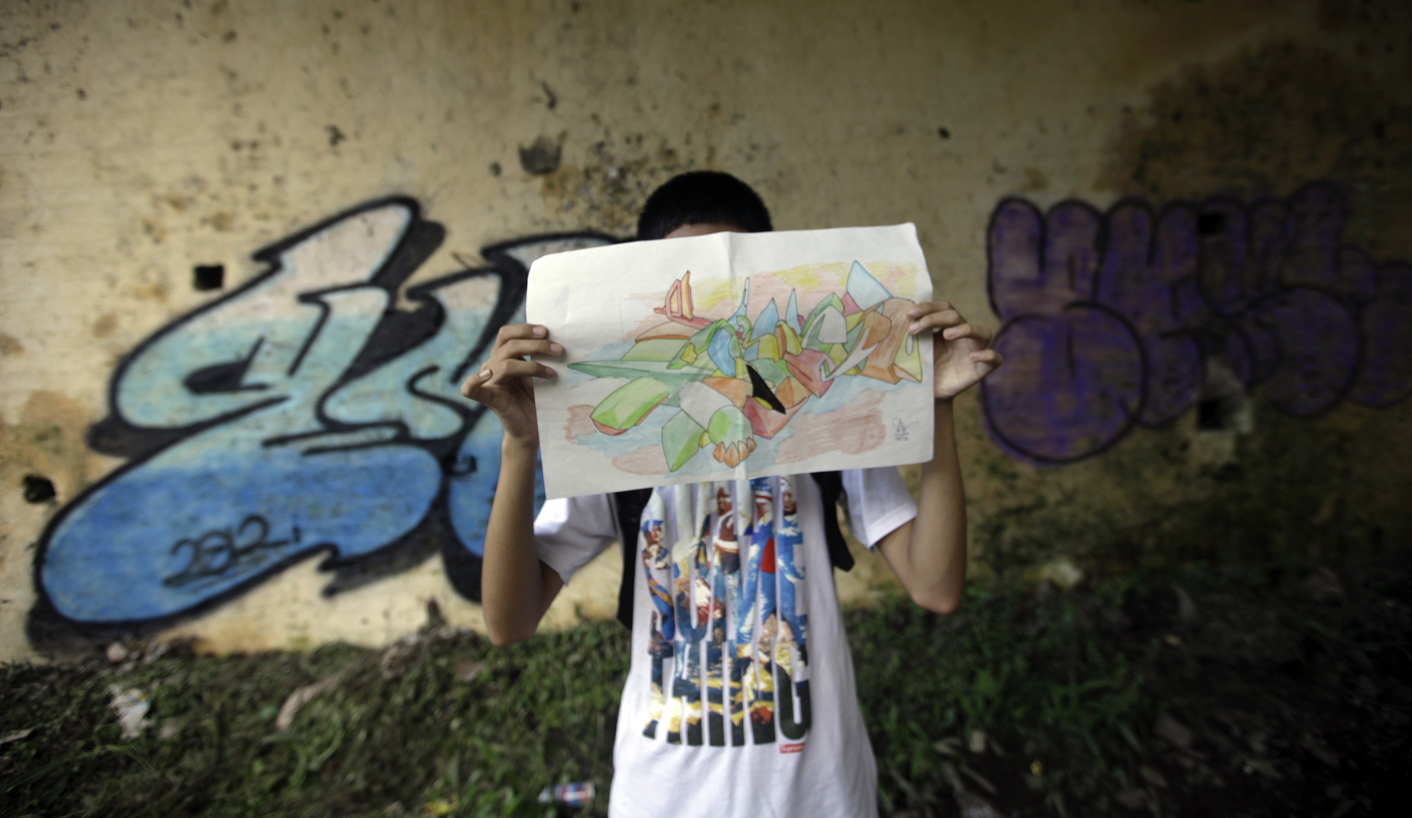A television set with wings hovers on a wall in a murky Yangon sidestreet.
"This was my first one," says Aung, 33, pointing proudly to an image he spray-painted last year to protest media censorship and now duplicated across Myanmar's commercial capital. "Media freedom is a big issue for me."
Aung, who requested that his full name be withheld, belongs to a new generation of Yangon street artists whose often politically charged graffiti was almost unthinkable before Myanmar's recent burst of reforms.
It has freed political dissidents, legalised trade unions and improved relations with the West, and the once-ubiquitous government spies have all but vanished. Emboldened, street artists are hitting Yangon to comment on everything from power shortages to money-laundering.
Their number has doubled to about 50 in the past year, says Aung, a painter and freelance graphic designer who has documented the rise of street artists.
Drawing inspiration from Yangon's nascent hip-hop and punk scenes, or from cult British artists such as Banksy, they find each other through Facebook or after dark out on the streets with paint cans in hand.
"Most young people just do tagging, which I don't like much," says Aung. "It has no ideology."
His hero is the celebrated British activist Banksy, whose often tongue-in-cheek work takes aim at war, poverty and the snobbery of the art world. Aung was hooked after watching Banksy's Academy Award-nominated documentary "Exit Through the Gift Shop".
"I liked his political thinking," he says. "I realized I couldn't say everything I wanted through art, but I could say it through graffiti."
"PLUG THE CITY"
Yangon's street artists have a vast canvas: the walls and shopfronts of a city of six million people. Those on Kaba Aye Pagoda Road, a busy north-south route, are favoured for their high visibility.
Graffiti of an electrical socket trailing a wire, usually accompanied by the slogan "Plug the city", became common in Yangon in May, when frustration over chronic power shortages led to nationwide protests.
"We didn't do it on the people's behalf, but because we ourselves were affected by the lack of electricity," says Twotwenty, 27, the pseudonym for a member of the collective Yangon Street Art, known by its plump, multicoloured tag "YSA".
Only 25 percent of Myanmar's 60-million population has access to the national grid, according to the World Bank.
A sketch of a washing-machine beside the initials of some well-known Myanmar banks refers to their suspected role in money-laundering.
Much of Yangon's graffiti is in English and the tone ranges from the profane - "Fuck snitches!" - to the polite: "Dear Mr President", reads a rambling plea for more electricity scrawled across a shopfront. "We need enough power ... with all due respect, Sir, we don't have that."
"Zoo, or animal prison?" asks graffito on the wall of Yangon Zoological Garden, faintly recalling a message supposedly written by Banksy on London Zoo's penguin enclosure: "We're bored of fish."
Aung's winged television set often appears with the slogan "FOR UR RIGHT."
The government abolished most media censorship on Aug. 20, but Orwellian laws remain intact, including those used to jail prominent activists after 2007 democracy protests led by Buddhist monks.
Like critics of graffiti everywhere, ordinary residents of the already run-down city find it hard to distinguish between street art and vandalism. "Most people don't know much about this art and the owners of the places where we graffiti are still very sensitive about this," said Aung.
So far, he says, no street artists have been jailed, although some have been briefly detained and let off with warnings.
Graffiti artists also fought a paint war against an unpopular Yangon mayor. A brigadier general in the army, Aung Thein Linn won a seat for the junta-created Union Solidarity and Development Party (USDP) in a fraudulent 2010 election.
By way of protest, street artists defiantly tagged the wall of his official residence on Kaba Aye Pagoda Road.
"All of us try to draw on this wall," says Aung. "It's painted over the next day."
Aung Thein Linn was replaced as mayor last year by another retired brigadier-general, and the graffiti war on the residence wall continues.
Another coveted target is the Yangon mansion of self-styled billionaire Tay Za, a U.S.-sanctioned business crony of the former junta. But its walls, which hide a fleet of top-end sports cars, remain unsullied.
"A security guard is always watching," explains Aung.
Some Yangon artists are now experimenting with stencils, a form popularised by Banksy. Aung recently sprayed an image of General Aung San, Myanmar's national hero and the father of democracy leader Aung San Suu Kyi, on a ruling party signboard. It was quickly erased.
Not every flat surface is fair game. There is an unwritten code to stay clear of schools, hospitals and religious buildings. The monastery-clogged streets around the Shwedagon Pagoda, Myanmar's most revered Buddhist site, are conspicuously devoid of graffiti. DM
Photo: Street artist ROM, 15, shows his sketch in front of his friend's graffiti on a wall under a bridge beside a railway line in Yangon August 25, 2012. For decades Myanmar was a dictatorship where pervasive surveillance by military spies meant even "tagging", the quickly drawn signature found in graffiti worldwide, was too risky. That began to change when a semi-civilian government took power in March 2011. It has freed political dissidents, legalised trade unions and improved relations with the West, and the once-ubiquitous government spies have all but vanished. REUTERS/Soe Zeya Tun




